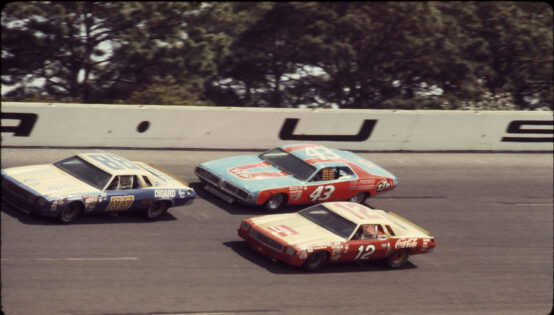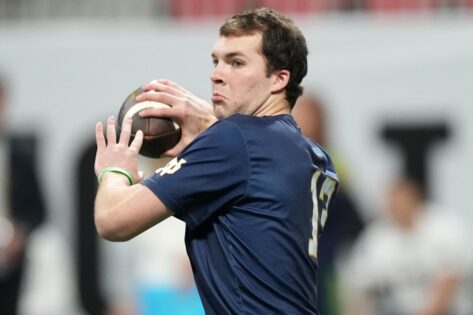Few names evoke the grit and tenacity of NASCAR’s golden years quite like Ron Hornaday Jr., a four-time NASCAR Truck Series champion and a 2018 inductee into the NASCAR Hall of Fame. Known for his relentless racing style, blue-collar roots, and a resume stacked with over 50 wins across NASCAR’s national series, Hornaday remains a cornerstone in the sport’s history. Hornaday was more than just a driver; he was a throwback to an era when heart, hustle, and horsepower ruled. He had his stint with Dale Earnhardt’s DEI and racked up championships in 1996 and 1998.
One of Hornaday’s most legendary performances came at the Milwaukee Mile in 1997, during the NASCAR Truck Series, where he battled fiercely with Jack Sprague in a race that is still remembered for its raw intensity. Driving the #16 Dale Earnhardt Inc. Chevrolet, he led 154 out of 200 laps but had to fend off the relentless challenges in the closing stages. Then there is his 2009 win at the same track when he won the race on his 51st birthday, driving for Kevin Harvick. Yet, for all of Hornaday’s accolades and war stories, there is one bizarre and unforgettable detail from his racing past that still leaves everyone scratching their heads.
How one of NASCAR’s toughest drivers lit up more than the track
While it may sound like something out of a Southern racing tell-tale, Ron Hornaday’s mid-race routines and rituals were very real and surprisingly tactical. In a recent interview with Kevin Harvick on his podcast “Happy Hour,” Hornaday was seen candidly speaking about his mid-field smoking routine. “I never got to drive with a mouthpiece,” said Hornaday. “I still drove with open helmets, and when they went to full face, I was the first one to complain about it. But back in the day, I smoked in my race car.” The old-school, rough-around-the-edges approach to racing wasn’t an exception; it defined him as a legend.
Hornaday did not just light up the track figuratively; he did it literally, in an era before in-car cool suits, biometric sensors, and closed cockpit helmets became the norm. When asked about the number of cigarettes he normally smoked in a race, he replied, “Just every yellow flag. I just use it so when I’m going to restart, I’d flick them out the window and hit the other guy’s window behind me, and they’d think, ‘oh, well, I’m sparking.’” His ability to focus, race, and win, even while puffing a cigarette, feels almost mythical in today’s sanitized version of NASCAR.
“Racing hasn’t changed other than the only thing I miss is the cars,” reminisced Hornaday. “I miss the people out there, but I think NASCAR has really developed this new car. I mean, you hear everybody complain about it.” During the peak of NASCAR, trucks and cars were raw mechanical beasts, with less aerodynamic precision, more driver feel. The setups were looser, suspension more forgiving, and the racing often came down to driver grit over data. However, today’s Next Gen cars are engineered for parity and durability, featuring independent rear suspension and composite bodies, but lack the personality and positive feedback that once defined the sport.
While the driving was fun during the golden year, Hornaday made it even more amusing for himself. As Kevin Harvick asked if he ever smoked in Earnhardt Sr.’s car, Hornaday said, “No. I was a secret closet smoker back then. I was trying to cut back then. But I drove for Wayne Spears, and Corelli beat me up there in Colorado, and it’s his home track.”
Tires weren’t the only thing @RonHornaday used to smoke during Truck Series races. @KevinHarvick | #NASCAR pic.twitter.com/Agr20OGGUU
— HarvickHappyHour (@HarvickHappyPod) June 12, 2025
Ron Hornaday’s time driving for Wayne Spears was marked by both loyalty and old-school intensity. Back in the day, the veteran driver used to drive for Spear Motorsports in the ARCA Series, and also made a few starts with them in the Cup Series. And his smoking shenanigans took a new turn with this partnership. “Wayne calls me in and says, ‘hey, look at that truck.’ I go, ‘what’s that?’ He goes, ‘that’s for your cigarettes,’ and I got a cigarette lighter in there. He said, ‘you ran out of nicotine. You need more cigarettes.’ Wayne Spears said that,” said Hornaday.
Despite being one of the most aggressive drivers of his time, Hornaday was still human, flawed, but grounded. Today, Hornaday’s story stands in stark contrast to the current generation of drivers, who train like Olympic athletes and monitor hydration levels during a race. Yet, that is exactly what makes his legend endure. In a world of wind tunnels and simulators, stories like his remind us why fans fell in love with racing in the first place, because it wasn’t just about speed. It was about character, and few had more of it than Ron Hornaday Jr., even if he was sparking more than just tires on restarts.
Ron Hornaday Jr. slams today’s NASCAR talent pipeline
Hornaday does not sugarcoat it when he spoke during the Darlington Cup weekend. As one of the most accomplished drivers in Truck Series history, with 51 wins and 4 championships to his name, Hornaday has seen the sport evolve firsthand, and he is not exactly thrilled with where things are headed. In a brutally honest moment, he expressed concern that too many of today’s young drivers simply have not earned their place. “Some of these kids don’t know how to do that. I hate to sound negative, but some of them don’t belong in there — and some of them do,” he said.
Hornaday’s frustration hits close to home, rooted in a generational contrast that came to life during a moment with his grandson. “My grandson was about nine years old, he said, ‘Hey, Papi, come over here and race me in this simulator.’ And I said, ‘No, I had enough racing.’ He’s like, ‘But yeah, you can’t get hurt in this. All you have to do is push a button to get a new truck,’” Hornaday recalled. For a man who built his career the hard way, that kind of mindset highlights how disconnected some modern racers are from the sport’s gritty roots.
Hornaday believed the shift to simulator-heavy preparation and sponsor-fueled fast tracks to the top led to a disconnect between driver and machine. “That’s what I kind of picture. These kids don’t have to work on their equipment — not all of them. They’re treating them like you can push a button and get a new truck,” he said. His comments echo a broader concern shared by many veterans, that today’s path to NASCAR stardom is more about money and access than mechanical know-how and race craft earned the hard way.
The post Hall of Fame Driver Recalls His Infamous Legends of Smoking While Driving: “I’d Flick Them Out the Window” appeared first on EssentiallySports.



